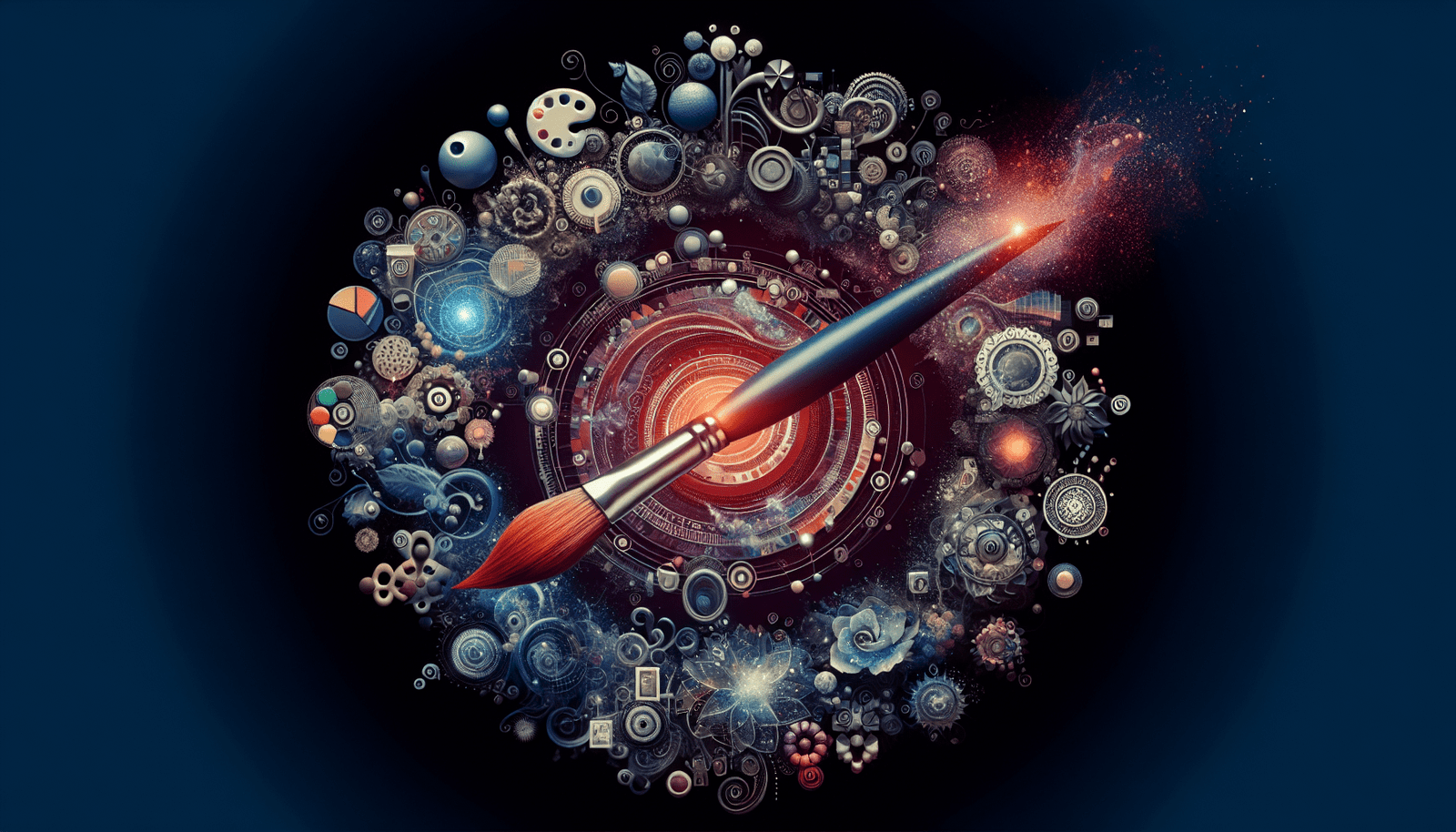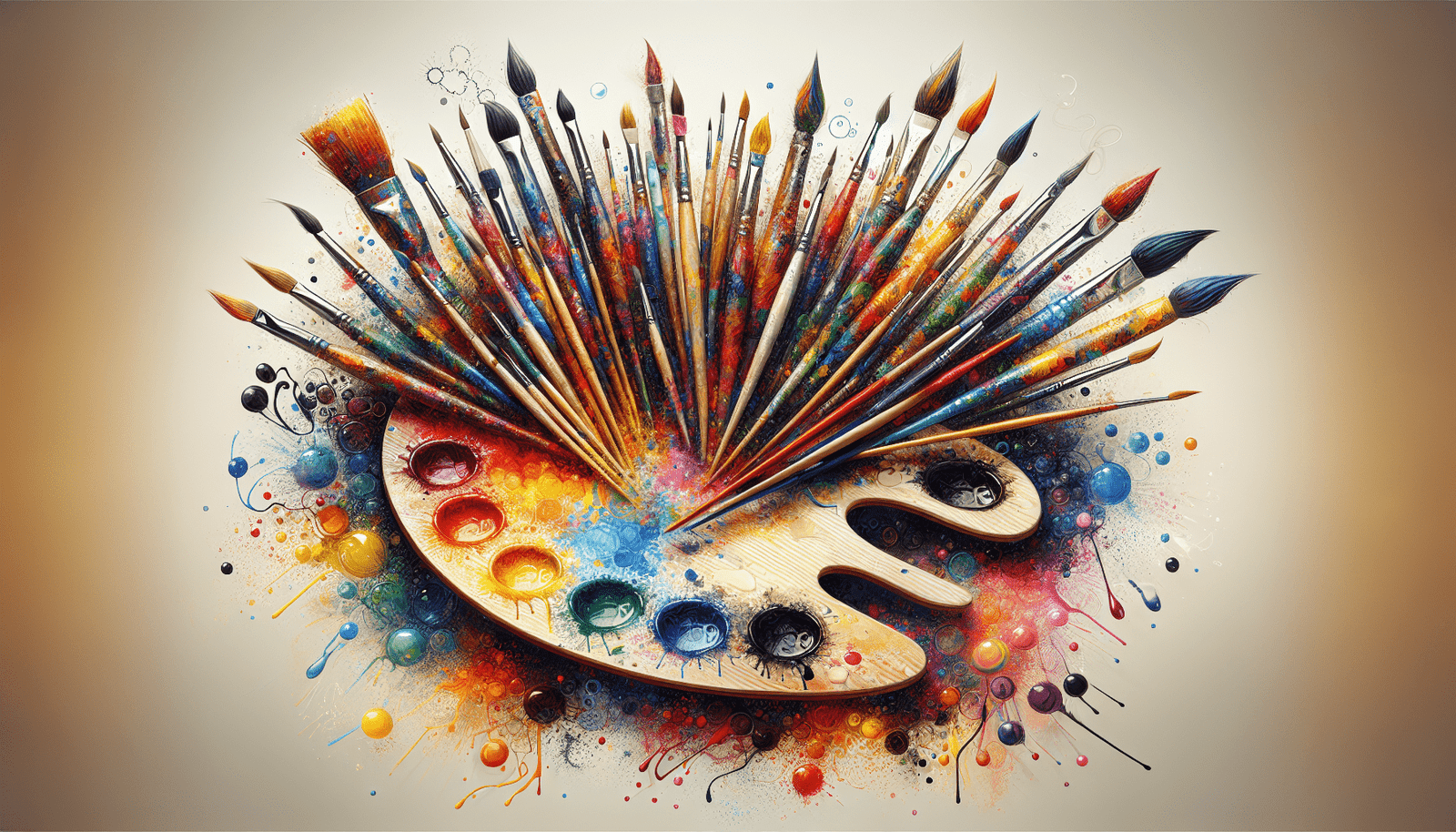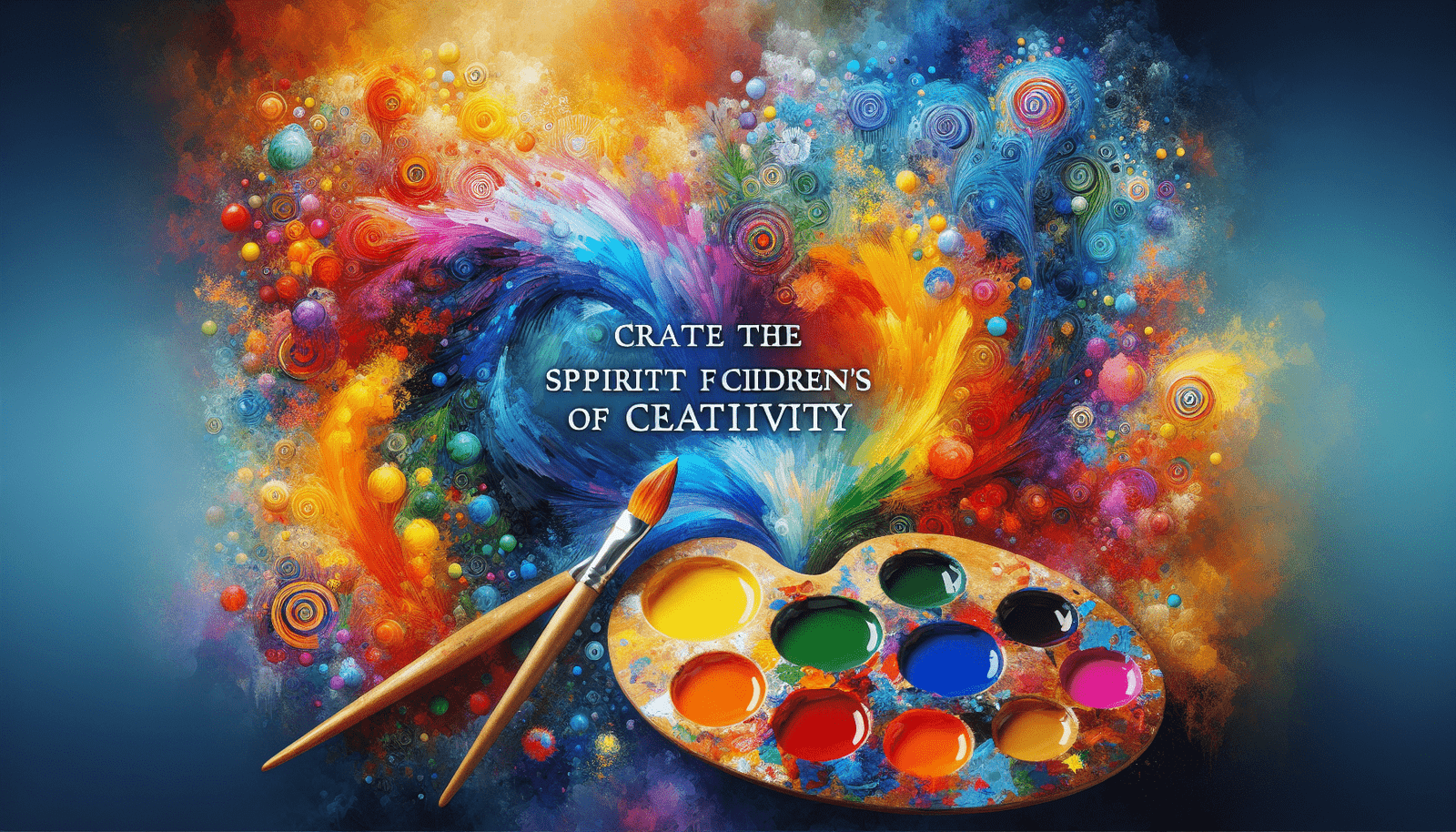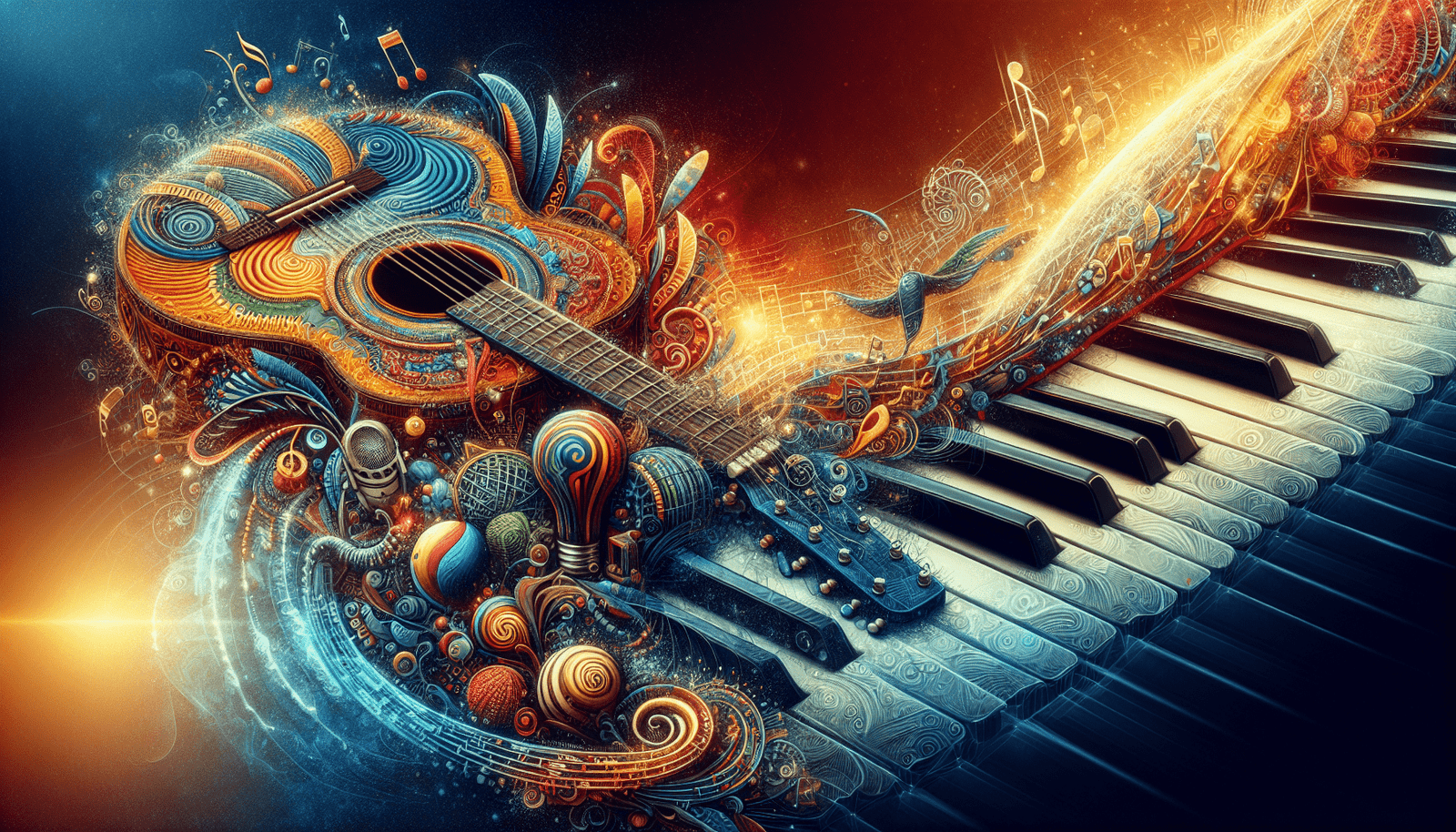Are you struggling to find ways to inspire your child’s imagination? Look no further! In this article, we will explore the top ways to foster creativity through art. Whether you’re a parent looking to engage your child in meaningful activities or an educator seeking innovative teaching methods, these tips will help you unlock the power of imagination. From encouraging free expression to providing a variety of art materials, we’ve got you covered. So grab your paintbrushes and get ready to embark on a journey of artistic exploration!
Using Storytelling Through Art
Art has always been a powerful medium for storytelling. Through imaginative story concepts behind the art, we can transport ourselves to different worlds, engage with intriguing characters, and become a part of unique narratives. Whether it’s a painting, sculpture, or any other art form, storytelling adds depth and meaning to the artwork.
When artists incorporate story concepts into their art, it allows viewers to form their own interpretations and connect emotionally. The visual elements, such as the composition, colors, and details, contribute to the narrative. By exploring and understanding the story behind the art, you can deepen your appreciation for the artwork and engage with it on a more personal level.
Relating Emotional Expression Through Abstract Art
Abstract art offers a unique way of expressing emotions and feelings. Without relying on realistic representation, abstract artists use shapes, colors, and textures to convey their thoughts and emotions. Each viewer may interpret abstract art differently, allowing for a personal and emotional connection with the artwork.
Through abstract art, you can explore and express your emotions in a non-literal way. The freedom of interpretation allows you to tap into your creativity and imagination, as you connect with the artwork on an emotional level. Abstract art invites you to explore your own thoughts and feelings, encouraging introspection and self-expression.
Using Art as a Storytelling Tool to Build Imagination
Art has the power to spark imagination and inspire creativity. By using art as a storytelling tool, we can unlock endless possibilities and dive into imaginative worlds. Whether you are creating your own artwork or admiring the work of others, art stimulates the mind and encourages us to think beyond the ordinary.
When you engage with art, let your imagination take the lead. Look beyond the surface and imagine the story behind the artwork. What are the characters doing? What might happen next? By actively engaging your imagination, you can build upon the stories within the art and create your own narratives. This process of imagination-building enhances your creative thinking and fosters a sense of wonder.
Exploring Different Characters, Settings, and Narratives in Art
Art offers a diverse range of characters, settings, and narratives for us to explore. From fantastical beings and enchanted landscapes to historical events and everyday life, art presents a vast array of stories waiting to be discovered.
When interacting with art, take the time to analyze the characters, settings, and narratives portrayed. Who are the characters? What is their story? What emotions and experiences are they going through? By delving into the details and nuances, you can fully immerse yourself in the artwork’s narrative and broaden your perspective of the world.
Encouraging Interaction with Art Supplies
Art supplies are the gateway to creativity and self-expression. By exploring a various range of art materials, you can discover new techniques, experiment with different mediums, and unlock endless possibilities.
To encourage interaction with art supplies, start by exploring a variety of materials. From pencils and paints to pastels and clay, each medium offers a unique way to express yourself artistically. Experiment with different color combinations to understand how they evoke different moods and emotions.
Beyond traditional art supplies, consider creating art out of everyday materials. This allows you to think outside the box and find inspiration in unexpected places. By challenging yourself to use unconventional materials, you can push the boundaries of your creativity and indulge in artistic innovation.
Tactile experience plays a crucial role in molding imagination. The feel of clay between your fingers, the stroke of a brush on canvas, or the texture of collage materials all contribute to a sensory experience that can spark your imagination. Embrace the tactile nature of art supplies and allow it to guide your creativity.
Creating Themed Art Projects
Themed art projects provide a structured approach to exploring different topics and engaging with art. By implementing seasonal theme-based projects, you can tap into the spirit of each season, celebrate holidays, and create art that reflects the changing world around you.
Travel-inspired art projects allow you to explore different cultures, landmarks, and landscapes. Through art, you can transport yourself to different countries and imagine the sights and sounds of faraway places. Whether it’s creating a travel journal, painting a famous landmark, or capturing the essence of a foreign city, travel-inspired art projects encourage a sense of adventure and curiosity.
Fairy tales and mythology have always been a source of inspiration in art. By delving into these timeless stories, you can create art that brings these magical worlds to life. Whether it’s illustrating your favorite fairy tale scene or imagining your own mythological creature, these art projects encourage imagination and storytelling.
Sequential art installations allow you to tell a story through a series of interconnected artworks. By creating a narrative that unfolds as viewers move through the installations, you can engage with art in a dynamic and interactive way. This form of art encourages you to consider the relationship between different artworks and how they contribute to the overall narrative.
Role of Art Museums and Galleries
Art museums and galleries play a vital role in exposing us to a diverse range of artistic expressions and fostering a deeper understanding of art. Through museum visits, we can explore different art movements, engage with historical and cultural contexts, and develop a more nuanced appreciation for art.
Art museum visits are important as they offer a curated collection of artworks that are carefully selected to showcase different artistic styles, periods, and themes. By immersing yourself in the museum environment, you can take the time to observe and contemplate each artwork, allowing for a deeper connection and understanding.
Interpretation of artwork in galleries is a personal and subjective experience. Each viewer brings their own perspectives, emotions, and experiences to the artwork, which shapes their interpretation. By discussing artwork in galleries, whether with friends, family, or other art enthusiasts, you can gain new insights and broaden your understanding of the artwork.
Interactive installations in museums provide a unique opportunity to actively engage with art. These installations often encourage viewers to become part of the artwork, inviting them to touch, move, and interact. By participating in these interactive experiences, you can explore art in a hands-on and immersive way, fostering a sense of wonder and curiosity.
Discussing artwork in the context of history and culture adds layers of meaning and significance. When you understand the historical and cultural background of an artwork, you can appreciate the influences and motivations behind the artist’s choices. By delving into the context, you develop a deeper appreciation for the artwork and gain insights into the broader cultural and historical narratives.
Art and Technology
Art and technology are increasingly intertwined, offering new possibilities for creativity and expression. Introducing digital art tools opens up a world of limitless creativity. From digital painting to 3D modeling, these tools allow you to explore new mediums and techniques that were previously inaccessible.
The bridge between traditional and digital art allows for a seamless integration of both worlds. Traditional art techniques can be combined with digital tools to create unique and innovative artworks. This blending of traditional and digital art expands the possibilities for artistic expression and encourages experimentation.
Virtual and augmented reality have revolutionized the way we experience art. Through VR and AR, we can step into virtual galleries, interact with digital artworks, and explore immersive art installations. These technologies enhance the interactive and experiential nature of art, allowing for a deeper engagement and a more personalized experience.
Games and apps that promote art and creativity provide interactive and engaging platforms for artistic expression. Whether it’s a drawing app or a game that allows you to design your own virtual world, these digital tools inspire imagination, foster creativity, and encourage artistic exploration in a fun and accessible way.
Integrating Art with Other Subjects
Art is not limited to its own realm but can be integrated with other subjects to enhance learning and stimulate creativity across disciplines. By incorporating art in different subjects, we can unlock new avenues for exploration and encourage a holistic approach to education.
Incorporating art in science allows for a visual representation of scientific concepts. Through illustrations and visualizations, complex scientific ideas can be simplified and made more accessible. By combining art and science, you can engage both the logical and creative sides of your brain, fostering a deeper understanding of scientific principles.
Art in mathematics explores the beauty and symmetry of geometric shapes and patterns. By incorporating art into math lessons, you can enhance visual-spatial skills, promote problem-solving abilities, and develop a deeper appreciation for mathematical concepts. Creating art using mathematical principles allows for a hands-on and creative approach to learning.
Art in history brings historical eras to life through visual representation. By studying and creating art inspired by different historical periods, you can gain a deeper understanding of the cultural, social, and political context of those times. Art can also be used to explore ancient symbolism and decode visual cues that have been used throughout history.
Art in English allows for a symbiotic relationship between literature and visual representation. By exploring literary themes through art, you can create visual responses that deepen your understanding of the text. Character design in art can bring literary characters to life, allowing you to connect with them on a visual and emotional level.
Implementing Group Artistic Activities
Group artistic activities encourage collaboration, communication, and the exchange of ideas. By working together on artistic projects, you can inspire each other’s imagination, learn from different perspectives, and create something truly unique.
Group painting and sculpting sessions provide an opportunity to combine individual creativity with collective ideas. As you collaborate with others, you can share techniques, experiment with different styles, and learn from each other’s artistic processes. These sessions not only foster a sense of teamwork but also spark new creative ideas.
Art jamming sessions offer a relaxed and informal environment for artistic expression. Whether it’s painting, drawing, or any other art form, these sessions encourage free-flowing creativity and experimentation. The absence of rules and expectations allows you to let go of self-judgment and fully immerse yourself in the artistic process.
Creating a group mural or collage allows for a collaborative and interactive art experience. By working together to piece together different elements, you can collectively tell a story or create a visual representation of shared ideas. This process promotes teamwork, communication, and the appreciation of each individual’s contribution.
Exploring Different Art Forms
Art is a vast and diverse field that encompasses various forms of creative expression. By exploring different art forms, you can broaden your artistic horizons, discover new techniques, and find inspiration in unexpected places.
Introduction to sculpture allows you to work with three-dimensional forms and explore the tactile nature of art. From clay modeling to stone carving, sculpture offers a hands-on approach to artistic expression. By manipulating different materials and exploring different techniques, you can create unique and expressive sculptures.
Experimenting with photography and filmmaking combines the power of storytelling with visual imagery. By capturing moments, telling narratives, and experimenting with different angles and compositions, you can use photography and filmmaking to evoke emotions and communicate your ideas visually. These art forms offer a way to document the world around you and share your unique perspective.
Getting creative with collage and mixed media allows you to combine different materials, textures, and images to create visually dynamic artworks. Collage is a highly versatile art form that encourages experimentation and playful exploration. By layering different elements and incorporating various mediums, you can create visually striking and imaginative collages.
Exploring the world of digital and graphic art opens up a realm of limitless creativity. Digital art allows for precise control, unlimited possibilities, and the ability to manipulate and transform images. Graphic art combines illustration, typography, and design to create visually compelling visuals for various purposes. By immersing yourself in digital and graphic art, you can push the boundaries of artistic expression and experiment with new techniques and styles.
Indulging in Art and Culture from Around the World
Art is a universal language that transcends cultural boundaries. Exploring multicultural art and craft allows you to appreciate the diverse artistic traditions and expressions from different parts of the world. By immersing yourself in art and culture from around the world, you can gain insights into different perspectives and broaden your creative horizons.
Studying famous artists and their works provides inspiration and understanding of artistic excellence. By examining the works of renowned artists throughout history, you can learn from their techniques, styles, and artistic processes. Understanding the context and motivations behind their works adds depth and significance to your own artistic practice.
Understanding global art movements allows you to explore the evolution of art and its impact on society and culture. From Renaissance to Impressionism, Cubism to Surrealism, each art movement represents a unique artistic expression and reflects the social and cultural shifts of its time. By delving into these art movements, you can gain a deeper understanding of art history and the interconnectedness of artistic ideas across different periods.
Folk art and tribal art provide a glimpse into the rich cultural heritage and traditions of specific communities and regions. By studying and creating art inspired by folk art and tribal art, you can celebrate the diversity of cultural expressions and learn from different artistic techniques and symbolism. These art forms often carry ancestral knowledge and spiritual significance, providing a deeper connection to the roots of human creativity.
Invigorating Creative Thinking Through Art Critiques
Art critiques foster a constructive environment for analyzing and evaluating artworks. By encouraging the analysis of artworks, we can deepen our understanding of artistic choices, techniques, and intentions. Engaging in art critiques also enhances our own critical thinking skills and inspires us to think creatively.
Encouraging the analysis of artworks involves observing and understanding the various elements that make up the artwork. By examining the composition, color theory, and use of symbolism, we can gain insights into the artist’s intentions and messages. This analytical approach allows us to appreciate the artwork from different perspectives and develops our ability to interpret and articulate our thoughts.
Discussing artistic style, technique, and color theory allows us to delve deeper into the artistic process. By exploring the unique style of an artist, the techniques they use, and the color choices they make, we can gain a deeper understanding of their creative approach. This analysis enhances our own artistic practice and inspires us to experiment with different styles and techniques.
Evaluating form, pattern, and design involves examining the visual elements and principles of design within an artwork. By analyzing how the forms interact, the patterns created, and the overall design composition, we can evaluate the visual impact and effectiveness of the artwork. This evaluation allows us to develop our own sense of aesthetics and create art that is visually engaging and impactful.
Fostering a constructive critique environment is essential in boosting imagination and creativity. By creating a safe and supportive space for sharing artwork and discussing ideas, we can learn from each other, embrace constructive criticism, and grow as artists. This environment encourages us to take risks, explore new possibilities, and push the boundaries of our creativity.
In conclusion, art offers countless ways to inspire imagination and creativity. From using storytelling to build narratives within artwork, to exploring different art forms and cultural expressions, there are endless avenues for artistic exploration and self-expression. By embracing art in its various forms, we can unlock our imagination, broaden our perspective, and tap into the transformative power of creativity. So, let your imagination soar and embark on a journey of artistic discovery!











